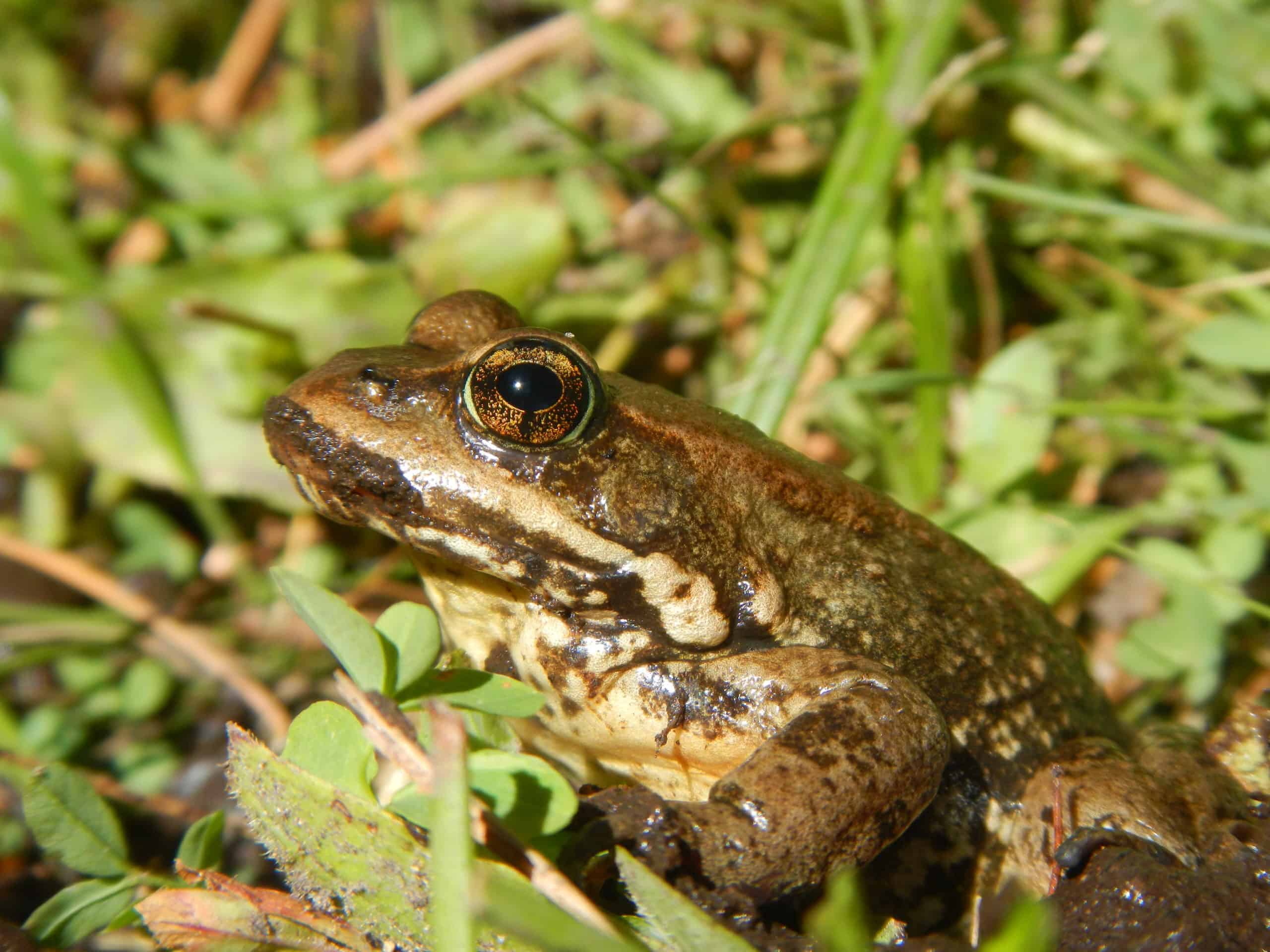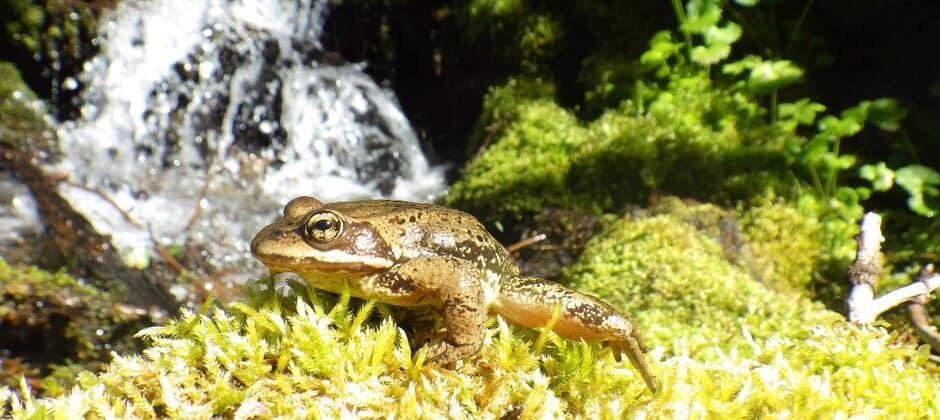Share this article
Cascades frogs in California are genetically distinct
Imperiled cascades frogs in California may need to be managed as a distinct population at the southern end of the species’ range.
“We know they’ve blinked out from a lot of locations in California,” said Bennett Hardy, a PhD student at Colorado State University. “It definitely warrants specific conservation actions.”
Cascades frogs (Rana cascadae) are found widely from Canada down to Northern California. The frogs, palm-sized and brownish gold in color with dark spots, typically live in wet montane meadows from moderate to high altitudes. They are active from roughly May to September or October, when they burrow into the bottom of lakes or underneath the snow to hibernate.
In California, the amphibians used to be relatively common. But chytrid disease caused by the fungus Batrachochytrium dendrobatidis has led to large-scale losses in numbers since the 1970s and 1980s.
“It’s estimated that frogs from about 95% of their historical locations in Northern California have declined since the ‘70s,” said Hardy, who was a master’s student at the University of Wisconsin Milwaukee when he conducted a study on the frogs published in Animal Conservation.
Hardy and his co-authors used genetics to analyze how well remaining populations were connected in Northern California compared to Oregon. Trekking through the rugged terrain of the Cascades and Klamath mountain ranges in 2016, the team collected genetic samples from hundreds of frogs at dozens of locations in Northern California and south central Oregon.

Adult female Cascades frog in Tehama County, California 2015. Credit: Bennett Hardy
The field survey experience was “pretty awesome and pretty unique,” Hardy said. Some days, they sampled lakes next to roads, but other times they had to backpack for days to reach hidden lakes.
After analyzing the DNA in the tissue samples, they found that frogs in California had much lower overall genetic density than those they sampled in Oregon.
In California, they could divide the frogs into two separate genetic groups. These may require listing status under state or federal endangered species regulations. The species as a whole is currently being considered for listing under the federal Endangered Species Act.
“Based on our research, California populations should be managed separately from populations in Oregon or Washington,” he said.
But the research they conducted may also help inform reintroduction efforts in California.
“Our results can help guide what populations to use as sources when managers are reintroducing cascades frogs to sites where they have been extinct,” Hardy said.
The frogs play important roles in the montane meadow ecosystems where they are found, controlling insect numbers and providing food for birds, mammals and reptiles, Hardy said, so it’s important to develop ways to stop declines.
Header Image: Juvenile Cascades frogs in Deschutes County, California. Credit: Bennett Hardy








